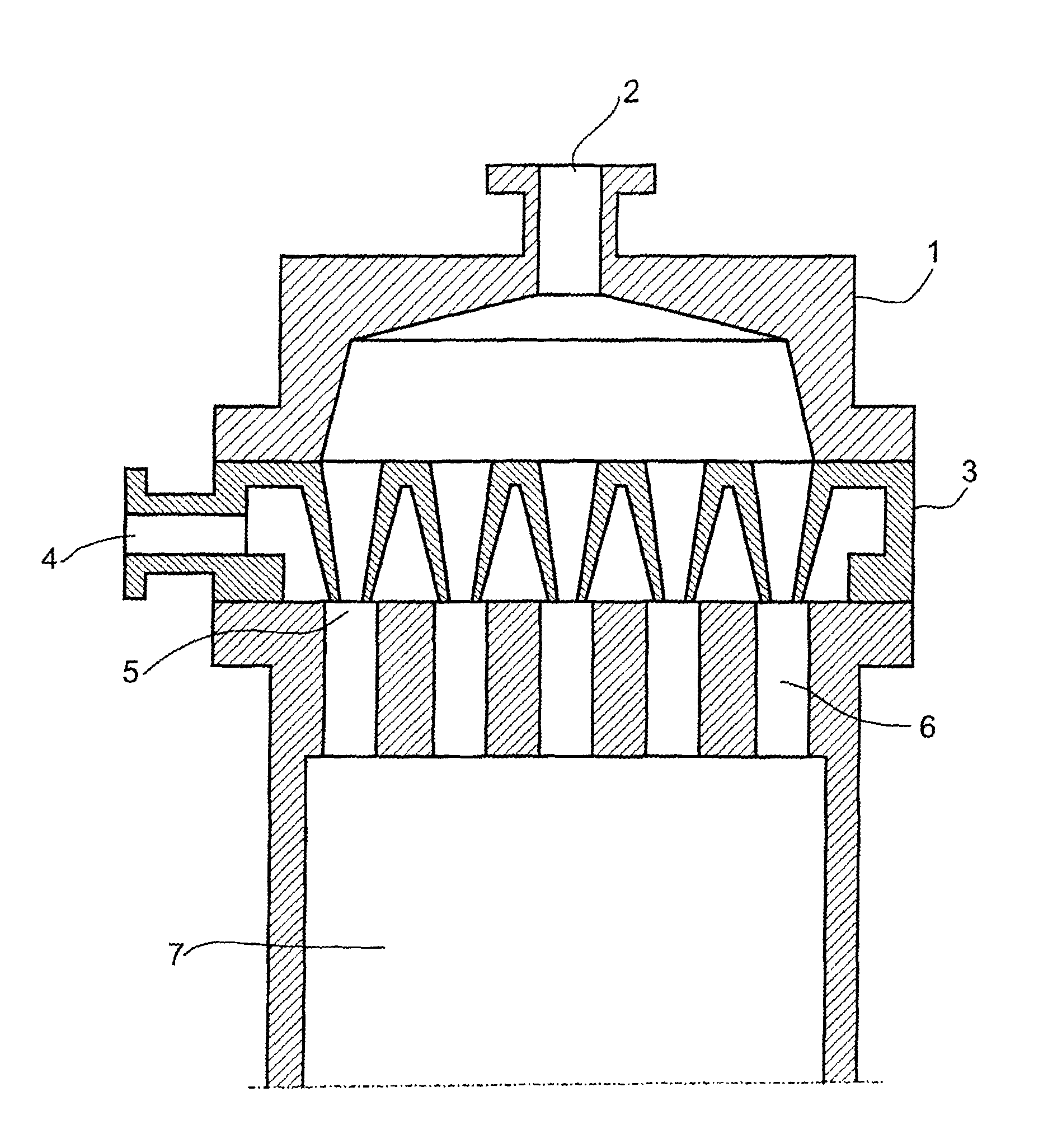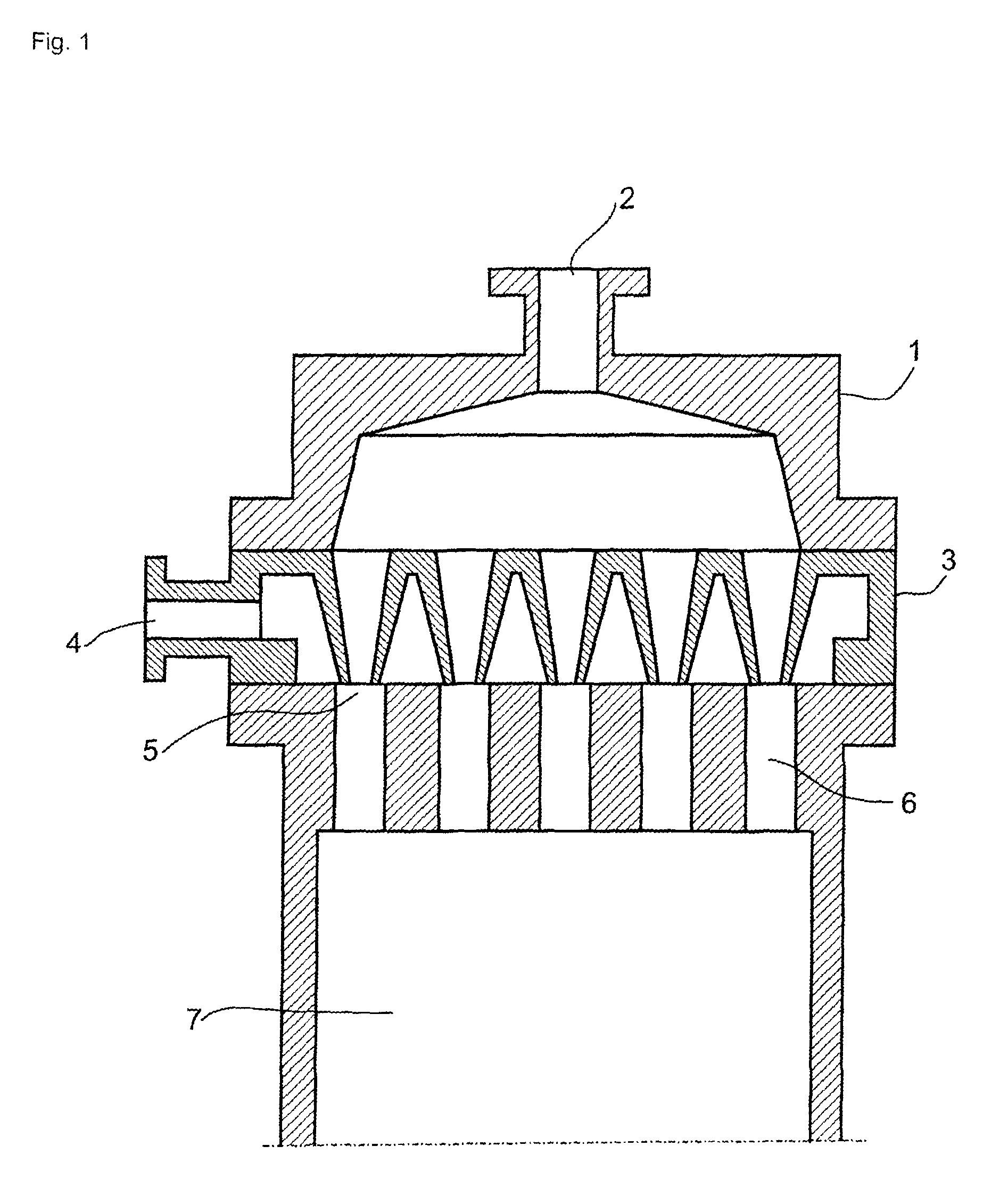Method and device for producing acetylene and synthesis gas by rapidly mixing the reactants
a technology of reactants and synthesis gas, which is applied in the direction of acetylene gas generators, organic chemistry, chemical/physical/physicochemical processes, etc., can solve the problems of pre-ignition and re-ignition danger, limited thermal stability, and risk of emission, and achieves easy and economical realization, high preheating temperature, and high pressure
- Summary
- Abstract
- Description
- Claims
- Application Information
AI Technical Summary
Benefits of technology
Problems solved by technology
Method used
Image
Examples
Embodiment Construction
[0022]1. In the operation of a conventional 25 metric tons per day acetylene burner, typically product gas compositions which comprise 8.5% by volume of acetylene are achieved with the use of natural gas.[0023]2. In a second experiment, a feedstock gas which comprises 6% by volume of ethane in addition to natural gas is reacted according to the invention. As a result, the concentrations of acetylene can be increased to 9% by volume in the crack gas.[0024]3. If the ethane content is increased to above 20% by volume, there is an enormous increase in pre-ignitions and the associated flare activities owing to the substantially shorter ignition lag time, so that economical operation of a conventional plant is no longer possible. With the aid of the process according to the invention, these re-ignitions can be avoided, and the acetylene concentration in the crack gas can be increased to above 9.5% of acetylene, which means a further increase in yield.
PUM
| Property | Measurement | Unit |
|---|---|---|
| diameter | aaaaa | aaaaa |
| diameter | aaaaa | aaaaa |
| length | aaaaa | aaaaa |
Abstract
Description
Claims
Application Information
 Login to View More
Login to View More - R&D
- Intellectual Property
- Life Sciences
- Materials
- Tech Scout
- Unparalleled Data Quality
- Higher Quality Content
- 60% Fewer Hallucinations
Browse by: Latest US Patents, China's latest patents, Technical Efficacy Thesaurus, Application Domain, Technology Topic, Popular Technical Reports.
© 2025 PatSnap. All rights reserved.Legal|Privacy policy|Modern Slavery Act Transparency Statement|Sitemap|About US| Contact US: help@patsnap.com


